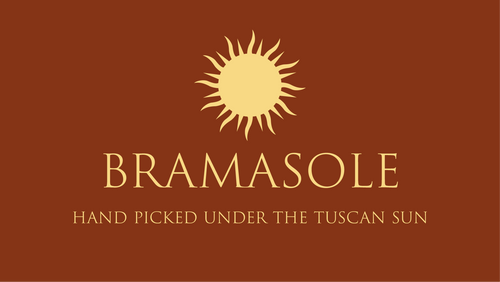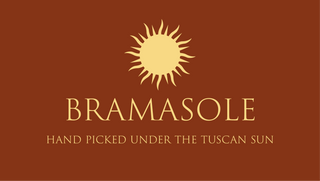The life of a movie in an Italian village - 20th anniversary of movie "Under the Tuscan Sun"


When my memoir was published in 1996, my agent shopped around for a film interest and there was none. One afternoon in the summer of 1998, my husband Ed and I were selecting a bottle of wine at an enoteca in the Tuscan hill town of Pienza. There were a few young scraggly looking Americans there too, and a tall, kindly looking man who came over to chat. “Are you American?” he asked.
“How did you guess?” Ed said. We talked about the local wines, how beautiful the renaissance village is, the usual tourist chitchat.
“Where are you staying?”
“We live part time in Cortona,” I said.
“Oh, there's a book about Cortona? Have you read it?”
We laughed and Ed pointed to me. This friendly man turned out to be Tom Sternberg, producer of the now classic “The Talented Mr. Ripley.” And in the motley crew in the wine store, probably exhausted from filming, were Anthony Minghella, the director, Gwyneth Paltrow, Matt Damon, and Philip Seymour Hoffman. Jude Law was nowhere in sight. Tom invited us to join them for dinner, but we had other plans and waved goodbye. Later, we thought Idiots, who turns down such an invitation?
The end. But a year later, I was invited to give a talk at the Italian Film Commission at Valentino’s in Santa Monica. Seated at my table was Tom Sternberg. What a coincidence. I was also down in Los Angeles to talk to someone because I finally had a nibble about a film of my book. During dinner I mentioned that we would be going to Warner Brothers the next day. Tom shrugged his shoulders and said, “Oh, are you taking a tour of the lot there?”
Ouch. I said, “No, we're following up a potential interest in my book.”
He looked very surprised, paused, and said, “Don't sign anything.”
And that was how the movie happened. Like so much else, the normal paths led nowhere, but a chance deviation offered a gift.

When I was back in Italy, Tom sent over Audrey Wells, who would both direct and write the screenplay. Fierce, beautiful Audrey became a close friend. She stayed a week. We discussed the screenplay, had long feasts under the stars, laughed. I loved her highly developed sense of the ridiculous.

I was worried, as the filming began—what would happen when Miramax/Disney came to this ancient town: 27 moving vans, a canteen set up for film crew meals, all the staff and crew from Rome working on the sets, late nights in the quiet streets. But I needn't have been concerned. Romances developed between local young people and the kids on the set. Not one local pestered the actors or interrupted their dinners in town. I said to Ed. “They've seen barbarian hordes before.”

From the beginning, the townspeople of Cortona embraced the idea of a film being made in this place of Etruscan foundations, medieval piazzas, Renaissance art. Many of our local friends were hired for parts—the shepherd with his flock blocking the road, the three nuns, the vegetable seller, and many others who dressed up to attend the wedding (where Diane wore the iconic cantaloupe-colored dress) near the end of the story. Our neighbors, the generous Cardinali family, began to host nightly dinners for Tom and a changing cast of local characters and actors. Placido grilled, Fiorella served huge bowls of pasta, and the wine glasses chimed around the table. The camaraderie was exceptional. We see these extras frequently and always greet each other with hugs, as if we survived something together. We make pecorino with Lapo the shepherd, and he often drops off fresh ricotta at my house.
If you've seen the film, you probably remember Audrey's homage to Fellini’s “La Dolce Vita,” The tipsy Catherine, played by Lindsay Duncan, splashes in the fountain constructed of fiberglass and resin by the crew. It was so realistic that one morning I heard an English tour guide explaining to her group, “This is Cortona's famous Baroque fountain.” The figure in the fountain was a nude Atlas holding up a shell for the water to run off. He was big—and big in all his parts. A few citizens objected and the next day I saw the crew sawing off much of the offending member.
Now the fountain is long gone and many miss it. I do!
Astonishingly—nothing short of astonishing—that a book and a movie can have a lasting impact on a town. Signs around town are posted at places of significance that were in the film. They feature photo stills and quotes from my book.
Right way, people began to arrive in Cortona. I’d thought that if any readers liked my book, they would be people like me. But the translations began, and people came from all over the world to see a place they’d read about. The film brought new waves of visitors. The number of hotels, b & b’s, restaurants, wine bars, shops exploded. Foreigners bought houses and traveled here to rent for
sybaritic vacations. Formerly a quiet town, Cortona became lively and thriving. Sometimes there’s a plethora of tourists but that’s true of hundreds of Italian towns.
We still have, after all this time, many visitors at our gate every day. You would think that would be annoying (occasionally it is), but overwhelmingly the visitors are happy, respectful, enthusiastic. Travelers who seek out the origin of a film or book are not ordinary. I’ve met so many, many people I would never have expected to meet. Sometimes there’s a surprise—the Polish group singing their national anthem, two people who met when they swapped cameras for photos and much later got married, a man I dated in college, the constant gifts left in the shrine beside our driveway—notes, coins, pretty rocks, wine, flowers and even a rose cutting from a Hungarian garden. The daily homage to the Madonna that I recalled in my memoir was a favorite scene in the movie. Outside Italy, few recognized that the cameo part of the man who left flowers every day was played by the great film director Mario Monicelli.
I wish Audrey had lived to witness the results of her work. She was taken too soon. Wouldn’t she be surprised—by now her film has cult status. At book events, over coffees in the piazza, when the flight attendant leans over my seat in the middle of the night, and at an enoteca in Sicily, hundreds of people say to me, “I've watched the movie 40 times.” “I watch it when I need help.” “It got me through my divorce.” “My mother loves the movie.” “This is my dream.”
The lovely mystery—how a book or a film can move someone to pack up and travel. I think, too, how fate intertwined my life with this place, whose history goes back more than 2,500 years. “Life offers you 1000 chances. You just have to take one.” That's Audrey's sunny line, not mine. I wouldn't even believe it if I hadn't happened to pick up a conversation with a stranger in a wine store one summer afternoon.
Frances Mayes



